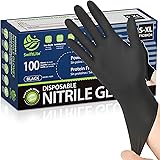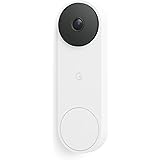With an average lifespan ranging from 25,000 to 50,000 hours, Light Emitting Diodes (LEDs) are often heralded for their exceptional durability and energy efficiency. However, a significant number of LED fixtures are prematurely discarded each year, frequently due to the failure of just one or two individual components. This contributes substantially to electronic waste, a growing environmental concern. The brief video above masterfully demonstrates a rudimentary, yet surprisingly effective, method for LED light repair utilizing a common graphite pencil.
This simple technique, while appearing almost too straightforward, is predicated on fundamental principles of electrical conductivity. It offers a practical solution for DIY enthusiasts and those seeking to extend the utility of their existing lighting without immediate replacement. Understanding the underlying causes of LED failure, the science behind this graphite-based fix, and proper application techniques are crucial for success.
Understanding LED Failure Modes
Before any LED repair can be attempted, it is essential to comprehend why these robust light sources cease to function. Despite their long operational life, individual LED diodes, or the associated driver circuitry, can fail. These failures are commonly attributed to factors such as thermal stress, voltage spikes, or manufacturing defects, leading to an open circuit condition within the LED string.
The Open Circuit Problem in LED Strings
Most LED light strips and fixtures are designed with individual diodes connected in series, or in a combination of series-parallel configurations. In a series circuit, if a single LED diode fails in an “open” state—meaning it no longer allows current to flow—the entire circuit is interrupted. Consequently, the remaining LEDs in that segment or string are prevented from illuminating, even if they are perfectly functional. This open circuit scenario is a primary target for quick, non-invasive repair methods.
The Science Behind Graphite-Based LED Repair
The ingenuity of the pencil-based LED light repair lies in the conductive properties of graphite, the primary component of pencil lead. Graphite is an allotrope of carbon, characterized by its layered crystalline structure. Within these layers, electrons are delocalized, allowing for efficient electrical conduction. This makes graphite an accessible, albeit unconventional, material for temporarily restoring electrical continuity.
How Graphite Establishes a Conductive Path
When a pencil’s graphite tip is applied to a failed LED, it effectively bypasses the malfunctioning diode. The graphite forms a thin, resistive bridge across the solder pads or contact points where the dead LED once completed the circuit. While the resistivity of graphite is significantly higher than that of copper wiring, it is sufficiently conductive to allow a small current to pass, thereby re-establishing the flow of electricity to the rest of the LED string. This creates a sort of ‘shunt’ around the broken component, allowing the circuit to be completed once more.
Step-by-Step Graphite LED Repair Process
Attempting any electrical repair necessitates adherence to stringent safety protocols. The process for a graphite-based fix is relatively straightforward, but careful execution is paramount. It is advised that these steps be followed precisely to ensure both personal safety and the efficacy of the repair.
Essential Safety Precautions Before Starting
- **Disconnect Power Completely:** This is the most critical step. Power to the LED fixture must be entirely removed from its source before any physical interaction. Even low-voltage LED circuits can carry sufficient current to cause a shock.
- **Wear Insulated Gloves:** While the circuit will be de-energized, the use of insulated gloves provides an additional layer of protection.
- **Avoid Water and Damp Environments:** Electrical repairs should only be conducted in dry conditions to prevent any risk of electrocution.
Identifying the Faulty LED Component
Identifying the precise dead LED is crucial. When power is briefly applied (with extreme caution) to an LED strip, a common indicator of a failed diode is often a tiny dark spot or a slightly discolored housing on its surface. Alternatively, a multimeter can be used to test continuity across individual LEDs in the strip, allowing the open circuit to be pinpointed with precision. This methodical approach ensures that the correct component is targeted for repair.
Applying the Graphite Bridge
Once the non-functional LED is identified and power has been safely disconnected, the graphite application can proceed. The tip of a standard graphite pencil (typically a B or 2B lead, which is softer and contains more graphite) should be firmly, yet carefully, rubbed across the surface of the failed LED. The goal is to deposit a continuous layer of graphite that connects the two solder pads or contact points on either side of the dead diode. Multiple passes might be required to build up a sufficiently conductive layer, forming an effective bypass.
Limitations and Longevity of Graphite Repair
While the graphite LED repair method is undeniably ingenious and cost-effective, its limitations must be acknowledged. This is generally considered a temporary or short-term fix rather than a permanent solution. The graphite layer is susceptible to wear, oxidation, and environmental factors such as humidity, which can degrade its conductivity over time. Furthermore, the resistance introduced by the graphite can affect the current flow, potentially leading to a slight reduction in brightness for the bypassed LED section or, in some cases, uneven current distribution that could stress other components.
When to Consider Alternative LED Repair Methods
For a more durable and reliable repair, alternative methods are usually recommended. Soldering a small ‘shunt resistor’ in place of the faulty LED, or carefully bridging the contacts with a fine wire and solder, provides a much more robust electrical connection. Dedicated LED repair kits, which might include replacement diodes and specialized tools, are also available for those seeking a more professional outcome. These methods offer superior longevity and maintain the original electrical characteristics of the LED circuit more effectively.
Preventative Measures for Extended LED Lifespan
Proactive measures can significantly extend the operational life of LED lighting and reduce the frequency of needing any LED light repair. Ensuring proper ventilation and thermal management is paramount, as excessive heat is a primary cause of premature LED degradation. Using appropriate power supplies and drivers that provide stable voltage and current is also crucial. Over-driving LEDs beyond their specified ratings severely shortens their lifespan. Regular cleaning to prevent dust buildup can also help maintain optimal thermal performance, contributing to the overall durability and efficiency of the fixtures.










